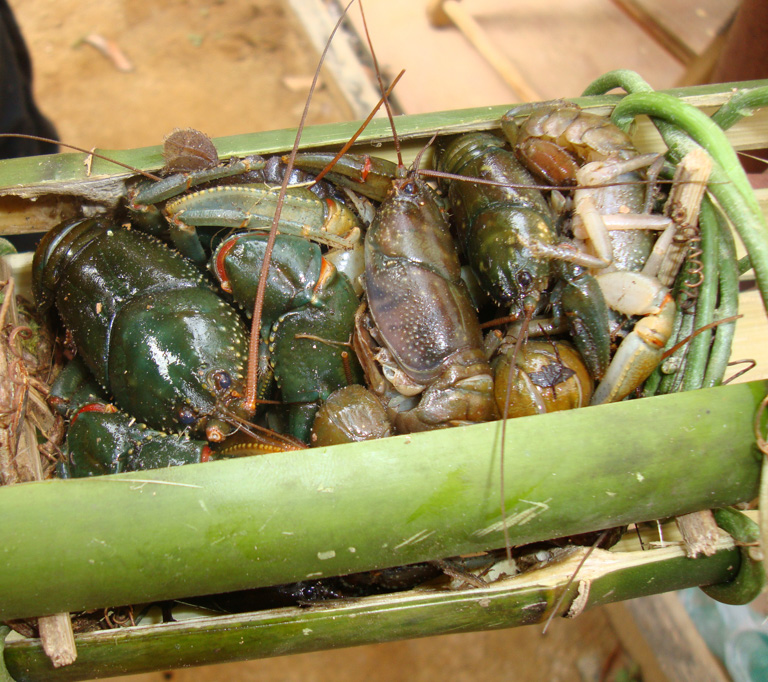- In an assessment of 653 freshwater plant and animal species living on Madagascar and nearby islands, biologists found that 43 percent are threatened with extinction or there isn’t enough information to assess how well they’re doing.
- Nearly 80 percent of endemic plants examined in the study face extinction.
- The team lists unsustainable farming practices, deforestation, dam construction, mining and the overuse of natural resources, such as overfishing, as causes for the widespread declines.
Madagascar is known as an ark for biodiversity that’s found nowhere else on the planet. Unfortunately, it’s also known for the bevy of threats that those distinctive species that live in its rainforests, woodlands and wetlands face. Now, the International Union for Conservation of Nature reports that many of the plants and animals living in the island’s freshwater habitats, as well as those of other southern Indian Ocean islands, are also being pushed closer to extinction.
A team of biologists compared known data on 653 freshwater species, ranging from fish and crabs to dragonflies and aquatic plants, and they found that 43 percent were either threatened with extinction or else scientists didn’t have enough information to assess how well they were doing. That’s more than double the proportion of threatened freshwater species on the African continent, according to a 2011 IUCN biodiversity survey.

More than 150 dragonfly species that the scientists looked at are endemic to Madagascar, meaning they’re found nowhere else in the world. Other endemics include a genus of freshwater snails that bear live young. Two of the species, Madagasikara madagascariensis and Madagasikara johnsoni, are classified as endangered.
The authors identified unsustainable farming — which they write includes the traditional slash-and-burn technique used by subsistence farmers around the world — as the most serious threat, particularly when it involves the drainage of wetlands to increase the amount of arable land. Deforestation, dam construction and mining also play a part in fouling bodies of freshwater, which in turn puts pressure on the plants and animals that live in them.
The authors said the overuse of natural resources, as in the case of overfishing, was a significant catalyst in driving down the numbers of some species. That finding is particularly concerning for the Malagasy people of Madagascar, said Laura Máiz-Tomé, an IUCN program officer and one of the report’s editors.

“Given the poverty levels in the country, the Malagasy people depend heavily on freshwater species for their livelihoods, through fisheries or the use of plants to make baskets for example,” Máiz-Tomé said in a statement. “To halt this dramatic decline, capacity building for conservation of these environmentally and economically valuable species should be made a priority.”
The 23 percent of plant and animal species that fall into the “data deficient” category highlights an important void in our understanding of Madagascar’s biodiversity, said William Darwall, who leads IUCN’s freshwater biodiversity unit and who edited the report.
“We urgently need more research to effectively conserve species in this hotspot for global biodiversity,”Darwall said in the statement.

The research revealed that aquatic plants found only in Madagascar are particularly threatened, said Sylvie Andriambololonera, a coordinator with one of the partners in the study, the Missouri Botanical Garden. Nearly 80 percent of endemic plants examined in the study are creeping toward extinction. But as with the animal species, the findings exposed how little we know about Madagascar’s freshwater plant life.
“Many [plant] species had not been recorded in the 50 years preceding this study, highlighting a need for more continuous field assessments,” Andriambololonera said in the statement. “Up to date assessments reduce gaps in our knowledge and ensure we can prioritise species for conservation.”
Banner image of a dragonfly in Madagascar by Rhett A. Butler/Mongabay.
Follow John Cannon on Twitter: @johnccannon
CITATION
Máiz-Tomé, L., Sayer, C. and Darwall, W. (eds) (2018). The status and distribution of freshwater biodiversity in Madagascar and the Indian Ocean islands hotspot. Gland, Switzerland: IUCN. viii+128pp.
FEEDBACK: Use this form to send a message to the author of this post. If you want to post a public comment, you can do that at the bottom of the page.
